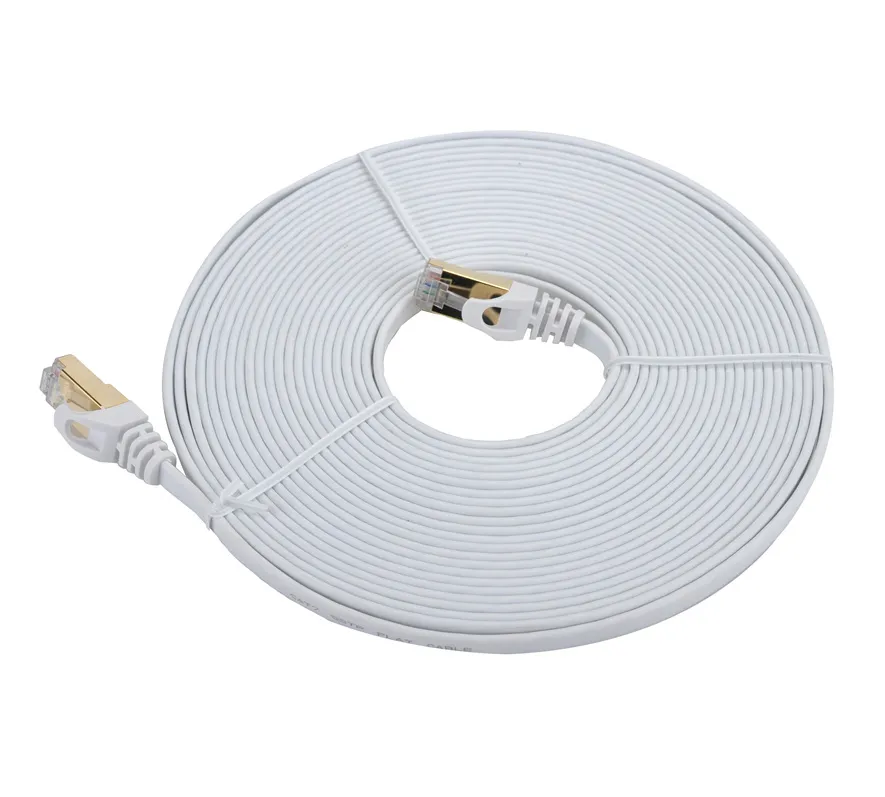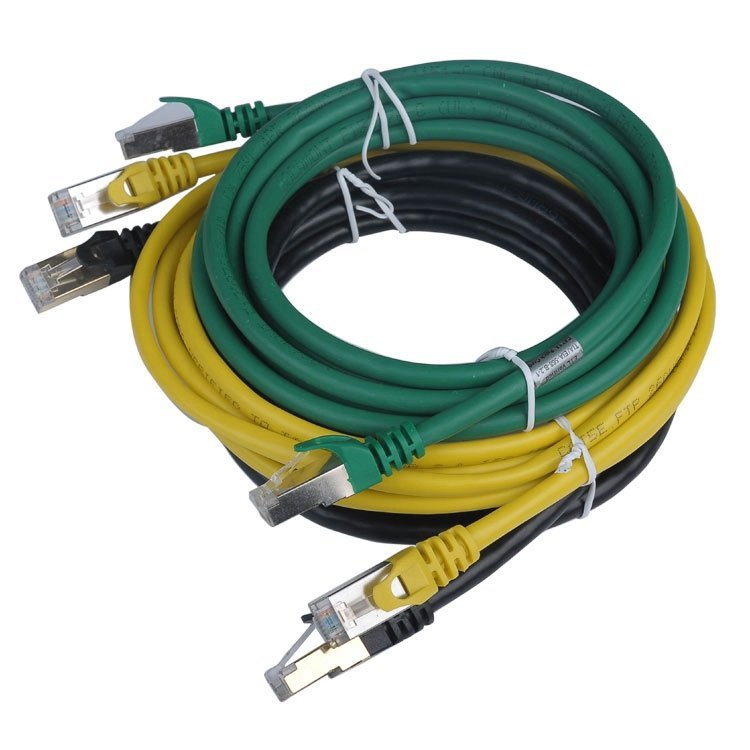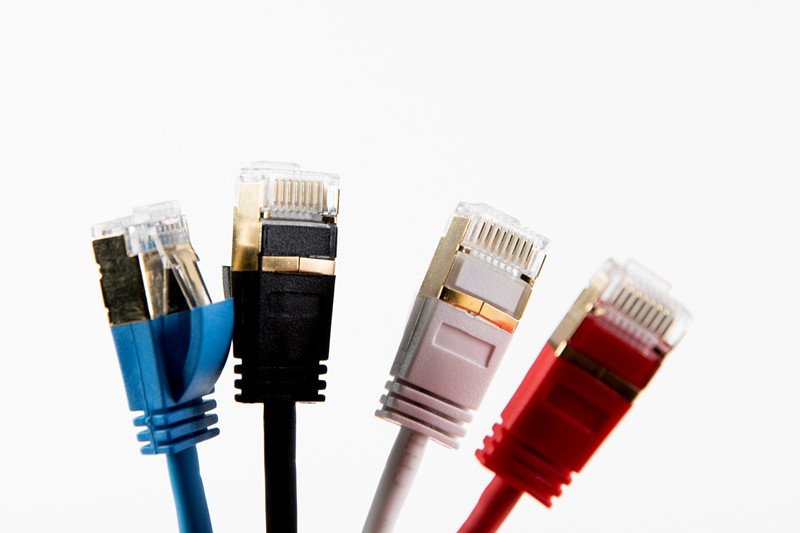The internet cabling is the first item you set up in the computer room or lounge room when you need a wired network. People are familiar with popular Ethernet cables such as Cat5e, Cat6, Cat6a,Cat7, and others.
Network cables come in different shapes such as flat and round cables. The following article unravels the distinction between flat and round cables.
Let me first give you introduction to these network cables.
Flat Ethernet Cable
Flat ethernet cable is a flat shape. It is impossible to build a shield on a flat network cable. For this reason, the majority of the cables are not shielded. However, with the development of technology, nowadays The Cat7 and Cat8 Flat cable are of the shieded function, you may choose them while using them in a complex condition.
But we still strongly recommend you use round cables against external EMI as it is with the natural shielding advantages. Due to this, the external EMI protection for Cat6 flat Ethernet cable is not available. So buy for Cat7 and Cat8.
Flat network cables offer
- usage flexibility
- packing savings

Round Ethernet Cable
The round Ethernet cable is a type of insulated wire with several layers of filler materials.
All these things work together to keep the original circular form. This helps to reduce the amount of heat generated by friction in network cables.
This type of filler material also protects the cord from the elements. Industrial and manufacturing settings make use of round electrical cables usually.
After the introduction, let’s move towards the differences between Flat Ethernet Cable and Round Ethernet Cable.

Insulation
Round network cables have higher insulation than flat ethernet cables. Insulation is a substance that separates conductors from one another.
Flat cables lack the filler and insulation found in circular wires. They take up less space and are lighter.
Flat cables have internal electrical wires that run parallel to each other. This results in greater electrical quality than round cables.
The advantage of parallel conductors is that they maintain their strength.
Round ethernet cables generate a small amount of heat with repeating motion cycles. This is due to the insulation and many layers of wire. Flat cables do not have this issue.
Installation
You can install round wires and give better fishing through walls than flat cables. They’re also more durable because of the protective insulation, filler, and shielding. They need less maintenance. Moreover, they have a longer lifespan than flat ethernet connections.
You cannot use standard patch leads with the flat cable design. It is because this combination intends for permanent installation. You can use typical category cables, such as Cat6, Cat7, and Cat8 round ethernet cables for this reason.
In comparison to round wires, flat cables need greater care. They are unable to deliver the same level of uptime as circular cables.
Data Distortion
Round cables are less prone to attenuation or data deterioration over long cables. Flat cables are more susceptible to EMI. It may experience attenuation over long distances.
Durability
Round cables with layers and filler materials are durable. This helps to maximize the amount of space available within the cross-sectional area. This little space allows cables to pass between the apertures in the panel and machine.
Flat cables do not contain any protective filler, which decreases the cable’s weight and cost. They give higher uniformity in electrical equality of conductors than flat ethernet cables.
Bending Radius
If you bend an ethernet cable too far, it can have a detrimental influence on network performance, such as sluggish data transfer speeds, intermittent connection loss, and even complete data transmission loss.
The average specified bend radius for CAT5 ethernet cables is 4 times the cable diameter. The least bend radius is 4 inches if the cable diameter is 1 inch (as in a normal CAT5). As a result, larger cables need greater bend radiuses.
You should bend the ethernet wires with caution especially the round one. The Flat cables are of more advantages for flexibility. That is why people use them in the corner and under the carpet.
Let’s wrap it up in a brief conclusion.
Final Thoughts
- Flat cable is ideal for short runs and convenience.
- It’s possible to put it under a carpet.
- In flat cable, the wires are not usually twisted.
- For improved crosstalk resistance, we recommend circular cable.
- Round cables are more friendly if you’re using PoE devices.
- Round wires may be covered in a variety of methods, including conduit or raceway.
Both of these cables are suitable for everyday usage in the home or office. A round cable has a better design and if you want the absolute greatest chance for greater speeds, it is perfect. Yet for the short distance and flexible spot, the Flat one is your best choice.

